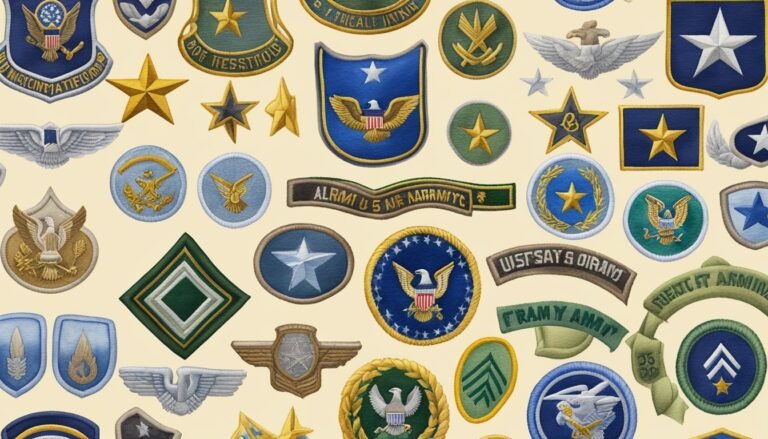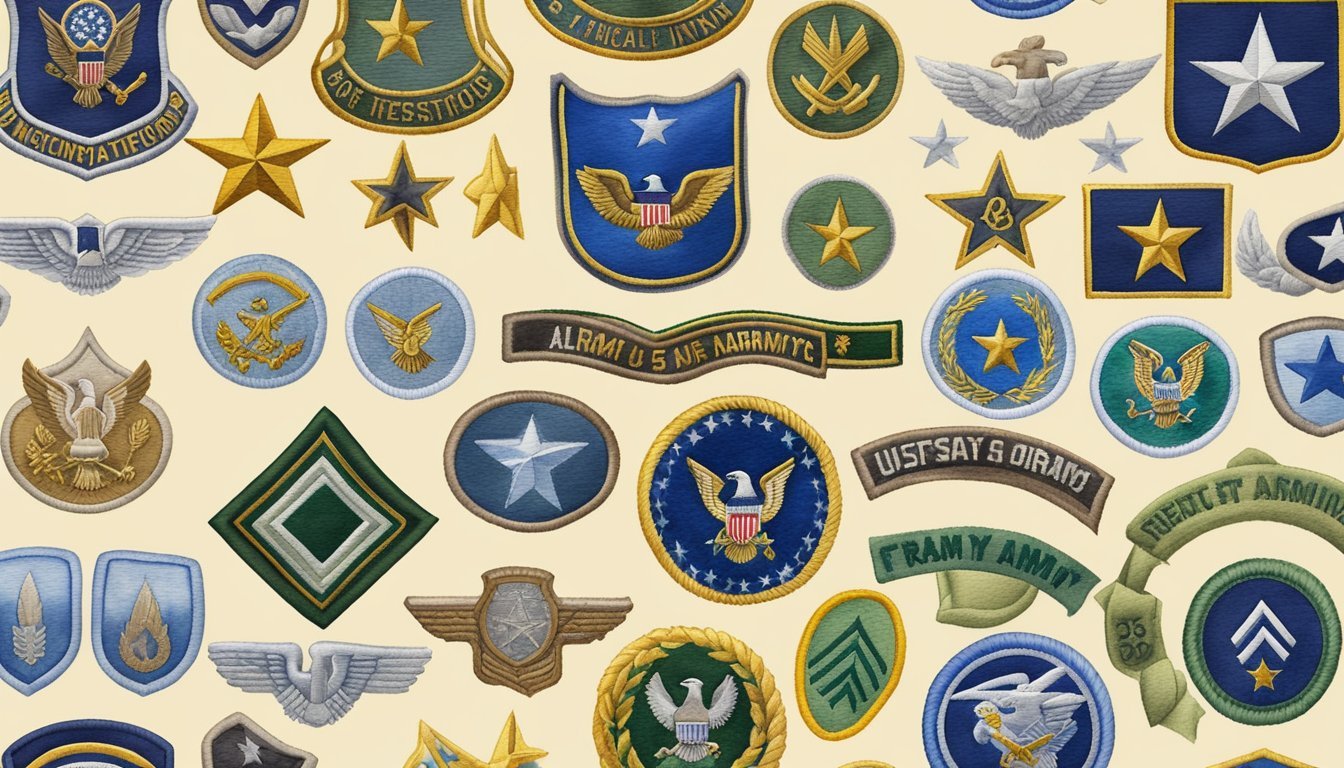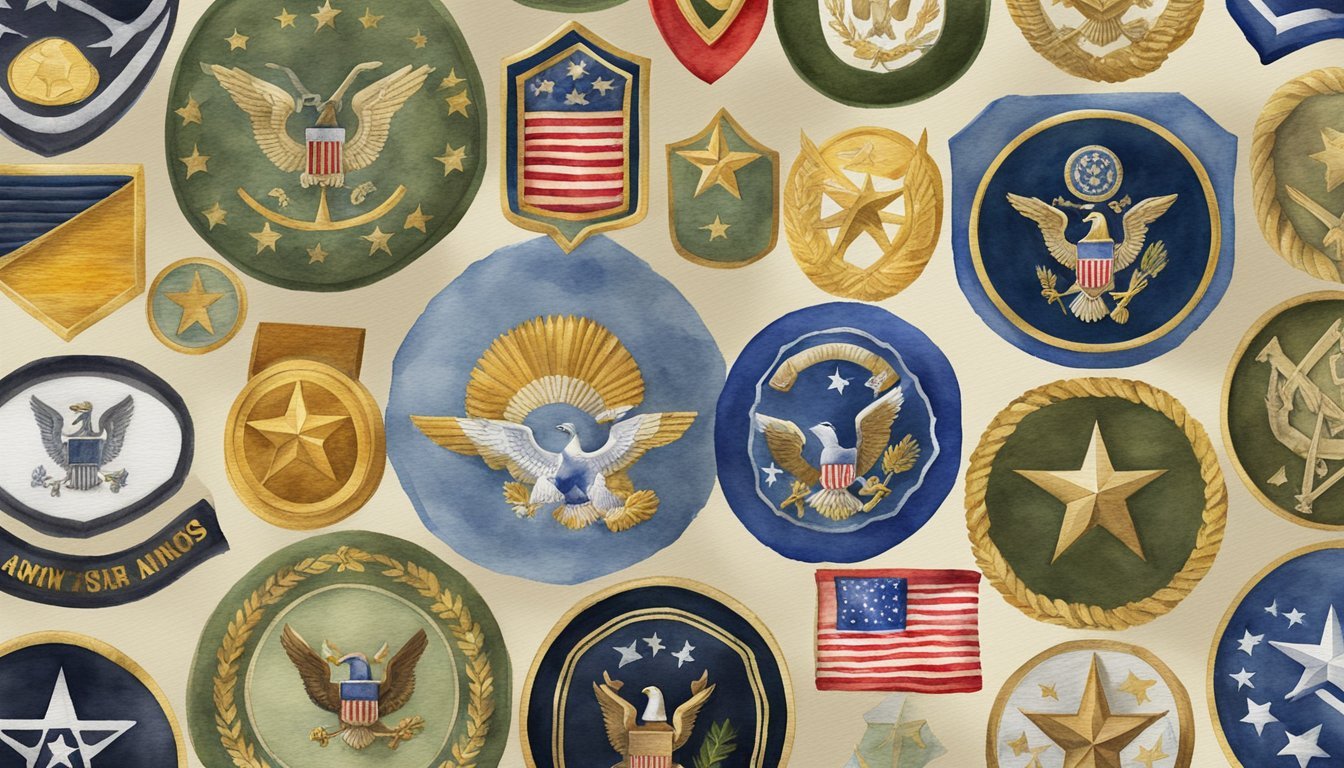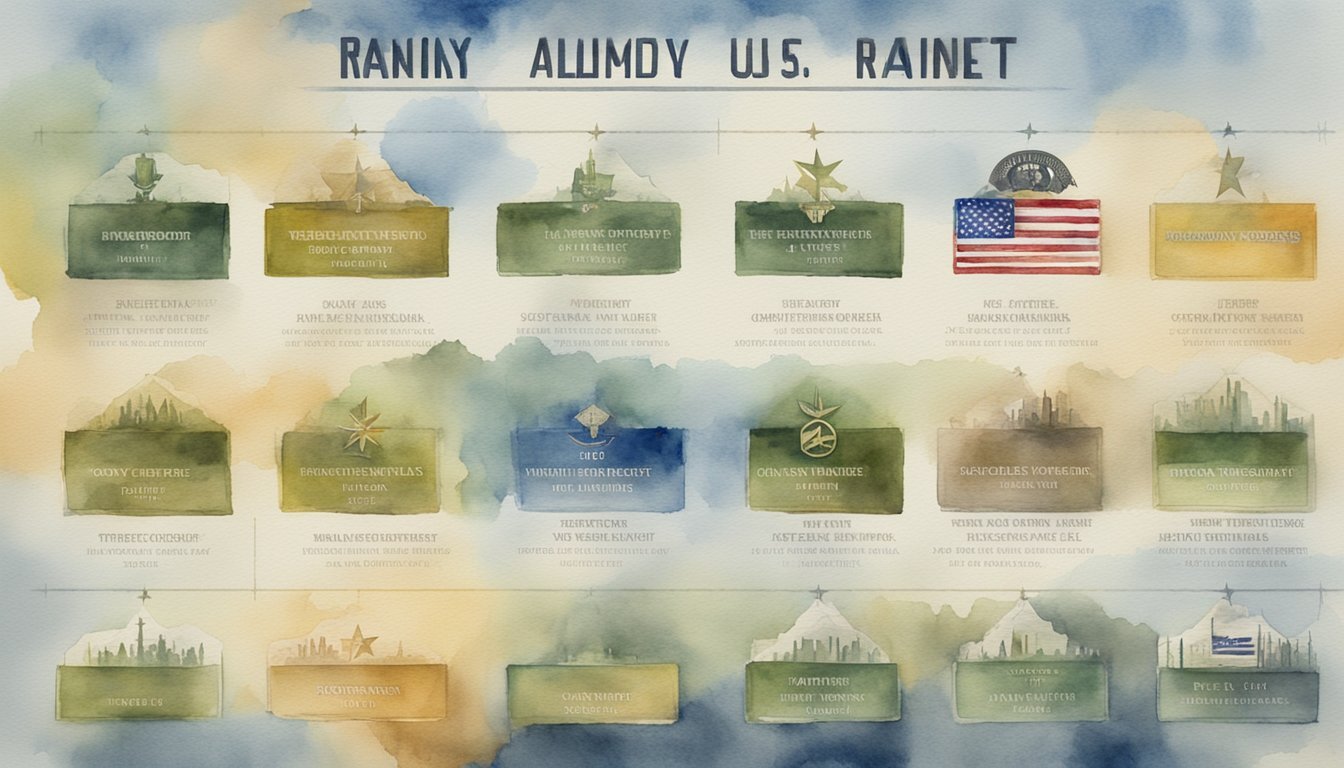US Army Ranks and Jobs Guide: Your Go-To Military Career Handbook

The U.S. Army is a place of structure, discipline, and opportunity.
Whether you’re just starting or looking to climb the ranks, understanding the different levels and duties is crucial. Army ranks are more than just titles; they signify your role, responsibilities, and career path.

You’ll find out how the U.S. Army organizes its personnel, from the lowest enlisted ranks to the highest officers.
This guide will also explore various jobs and career paths available, each requiring unique skills and dedication.
Knowing what to expect can help you better navigate military life and make informed decisions about your future.
Key Takeaways
- Understanding ranks is crucial for grasping your role and responsibilities.
- The Army offers diverse career paths with unique opportunities.
- Leadership and continuous training are core to Army life.
Understanding Army Ranks and Structure
When you join the U.S. Army, you’ll encounter a detailed rank system.
It’s divided into three main tracks: Enlisted Ranks, Officer Ranks, and Warrant Officers.
Each track has unique roles and responsibilities that define your career path.
Enlisted Ranks Explained
Enlisted Ranks start from Private (E-1) and go up to Sergeant Major of the Army (E-9).
As an enlisted soldier, your journey begins with basic tasks and training.
-
E-1 to E-4: Private, Private Second Class, Private First Class, Specialist, Corporal – These early ranks involve learning the basics of military life and beginning to take on more responsibilities.
-
E-5 to E-6: Sergeant and Staff Sergeant – This is where you start taking on leadership roles, guiding lower-ranked soldiers and handling more complex duties.
-
E-7 to E-9: Sergeant First Class, Master Sergeant, First Sergeant, Sergeant Major, Command Sergeant Major, Sergeant Major of the Army – At these higher ranks, you are deeply involved in leadership, mentoring, and the overall management of your unit.
Each rank has specific insignia you wear to show your status.
Officer Ranks Hierarchy
Officers lead and command soldiers.
Their ranks start from Second Lieutenant (O-1) and move up to General of the Army (O-10).
-
O-1 to O-3: Second Lieutenant, First Lieutenant, Captain – These ranks consist of junior officers who lead small units and start learning the ropes of command.
-
O-4 to O-6: Major, Lieutenant Colonel, Colonel – In these mid-level ranks, officers take on more significant leadership roles, often commanding battalions and units.
-
O-7 to O-10: Brigadier General, Major General, Lieutenant General, General – Higher ranks are reserved for senior officers who oversee large divisions or entire branches of the Army. The highest rank, General of the Army, is a five-star rank used only during wartime.
Commissioned Officers guide the entire force and make crucial strategic decisions.
Warrant Officer Track
Warrant Officers are technical experts who bridge the gap between enlisted soldiers and commissioned officers.
- W-1 to W-5: Warrant Officer 1, Chief Warrant Officer 2 to 5 – Starting from W-1, you focus on specialized technical areas. By the time you reach W-5, you are a master in your field, providing valuable expertise and advice.
These ranks are for those who want to develop deep technical skills while still taking on leadership roles.
They serve as mentors and trainers, playing a crucial part in the Army’s operations.
Understanding these ranks helps you see the career path and what is expected at each level.
Army Leadership and Development
Army leadership involves guiding soldiers, upholding core values, and fostering teamwork and discipline.
Leadership skills vary based on rank and role, but the goal remains the same: to develop effective leaders at every level.
Noncommissioned Officer Roles
Noncommissioned Officers (NCOs) are crucial for maintaining the daily operations of the Army.
As an NCO, you’ll focus on task execution, ensuring your team follows orders and meets standards.
Your responsibilities include training soldiers, conducting drills, and maintaining discipline within your unit.
NCOs also act as the bridge between enlisted soldiers and commissioned officers.
This means you’ll need to communicate effectively, manage conflicts, and lead by example.
Through hands-on leadership, NCOs shape the Army’s core values in their teams, ensuring all soldiers embody those principles.
Your role is vital for instilling leadership skills and discipline within the ranks.
Commissioned Officer Leadership
Commissioned Officers lead at a strategic level.
Your responsibilities include making decisions that affect the entire unit, planning missions, and providing leadership during operations.
Officers must display strong leadership skills and a deep understanding of military strategy.
As a commissioned officer, you are tasked with mentoring NCOs and ensuring your team aligns with the Army’s core values.
Leadership qualities like decisiveness, integrity, and vision are essential.
You are expected to develop these skills continuously to manage larger teams and more complex missions.
Officers are trained at military academies and through continued professional development.
Warrant Officer Responsibilities
Warrant Officers are technical experts in the Army.
They focus on specific fields like aviation, intelligence, or maintenance.
If you become a Warrant Officer, you’ll be responsible for maintaining and developing your technical expertise while also leading and training others in your specialty.
Leadership for Warrant Officers involves ensuring your team can effectively use and maintain complex systems.
You will also work closely with both NCOs and Commissioned Officers to integrate technical skills into broader operational plans.
Your role is essential for the functioning of specialized Army operations and requires a high level of discipline and teamwork.
Insignias and Symbols of Rank

Understanding the insignias and symbols of rank in the U.S. Army helps you recognize and respect the hierarchy.
Different ranks have distinctive markers that are essential for identifying roles and responsibilities.
Enlisted Insignias
Enlisted soldiers have a series of stripes, chevrons, and other symbols.
These insignias are worn on the uniform sleeves.
For example, a Private (E-1) has no insignia, while a Private Second Class (E-2) displays a single chevron.
As you move up the ranks, these symbols become more complex.
A Sergeant (E-5) has three chevrons.
The highest enlisted ranks, like the Sergeant Major of the Army (E-9), include distinctive symbols like an eagle and multiple chevrons and rockers.
Each mark signifies a level of experience and responsibility.
Officer Insignias
Officers wear insignias that include bars, oak leaves, and stars on their uniforms.
These symbols often appear on the shoulders or collars.
Second Lieutenants (O-1) start with a single gold bar. Captains (O-3) have two silver bars.
Higher ranks, like Colonels (O-6), display silver eagles.
The highest officer ranks, such as Generals (O-10), have stars ranging from one to four, representing their senior status and command level.
These insignias help to easily identify leaders in the field.
Warrant Officer Insignias
Warrant officers are technical experts who bridge the gap between enlisted soldiers and commissioned officers.
Their insignias reflect their specialized roles and are often a combination of bars and squares.
For instance, a Warrant Officer 1 (WO1) has a single silver bar with a black square. Chief Warrant Officers (CW2-CW5) have progressively more elaborate symbols, with additional squares and stripes.
The Chief Warrant Officer 5 (CW5) has a silver bar divided by a black stripe along its length.
These insignias highlight their expertise and advanced training.
Key pay grades, abbreviations, and symbols help you quickly identify a soldier’s role in the U.S. Army.
This is important for organization and respect within the ranks.
The Role of the U.S. Army
In 2024, the U.S. Army serves multiple essential functions to protect the country and support global stability.
These functions are carried out by Active Duty components, as well as the Reserve and National Guard, each with specific responsibilities and operational focuses.
Active Duty Components
Active Duty soldiers are the backbone of the U.S. Army.
They serve full-time and are usually stationed at military bases both in the U.S. and abroad.
These soldiers are always prepared for deployment, engaging in rigorous training to maintain readiness.
Daily life is highly structured, with specific routines for training, maintaining equipment, and preparing for missions.
Active Duty troops can be called upon for various missions, including combat operations, humanitarian aid, and disaster response.
They are key players in joint missions with other military branches and international allies.
Their constant state of readiness ensures the Army can react quickly to any threats or emergencies.
Reserve and National Guard
The Army Reserve and National Guard are vital components that support the Active Duty forces.
Reservists typically serve part-time while maintaining civilian jobs.
They undergo regular training to stay prepared for when they might be called to active duty in times of need, such as war or national emergencies.
The National Guard operates under both state and federal authority.
This dual role allows them to respond to local crises like natural disasters, riots, and other emergencies within the U.S. When called upon federally, they can join Active Duty forces for overseas missions.
Both the Reserve and National Guard provide flexibility and additional manpower, ensuring that the Army remains robust and capable of handling multiple tasks simultaneously.
Army Jobs and Career Paths
The U.S. Army offers a variety of career paths for soldiers looking to make an impact in different fields.
These paths include combat roles, support and service positions, and specialized careers.
Combat Occupations
In the Army, combat occupations are for those who want to be directly involved in defending the country and engaging in frontline operations.
Examples include Infantry Soldiers, Tank Operators, and Artillery Specialists.
You might also consider becoming part of the Special Forces, which perform elite missions worldwide.
Combat roles are physically demanding and often require extensive training and teamwork.
These positions are crucial for national defense and involve both strategic planning and hands-on action.
Support and Services
Support and service roles keep the Army running smoothly.
These include jobs in logistics, administration, and medical fields.
Military Police help maintain order and discipline within the ranks and perform law enforcement duties.
Other vital roles include medics who provide essential medical care on and off the battlefield and supply specialists who manage resources and equipment.
These positions ensure that soldiers have everything they need to succeed, and they often involve specialized training to handle logistics, care, or law enforcement tasks efficiently.
Specialized Careers
Specialized careers require unique skills and training.
These include positions like linguists, who help with translations, and cyber specialists, who protect against cyber threats.
Being part of Army Bands also falls under specialized careers.
Musicians perform at ceremonies, parades, and other events, boosting morale and representing the Army at public events.
These careers allow you to use your unique talents to support Army missions.
You’ll often receive advanced training and work on high-impact projects that are vital to the Army’s operations.
Enlistment Process & Basic Training
Joining the U.S. Army involves a multi-step enlistment process followed by Basic Combat Training (BCT).
You’ll learn everything from the Army’s values to survival skills over several intense weeks.
Recruitment and Requirements
The first step is talking to a recruiter.
They provide information about different Military Occupational Specialties (MOS) and help you choose the best fit.
You’ll need to pass the Armed Services Vocational Aptitude Battery (ASVAB) test, which measures your skills and strengths.
Next, you’ll undergo a physical exam at a Military Entrance Processing Station (MEPS).
Here, doctors check things like vision, hearing, and general medical fitness.
You also need to meet age and citizenship requirements—typically, recruits must be between 17 and 34 years old and a U.S. citizen or legal resident.
Basic Combat Training (BCT)
Basic Combat Training is where you transition from civilian to soldier.
Over roughly ten weeks, you’ll go through three phases: Red, White, and Blue.
The Red Phase focuses on basic soldier skills—like discipline, physical fitness, and marksmanship.
During the White Phase, you build on these skills with hand-to-hand combat training and more advanced marksmanship.
The Blue Phase prepares you for your future Army role.
Here, you’ll participate in field training exercises that test all the skills you’ve learned.
Physical Readiness Training is ongoing throughout these phases to ensure you’re always in peak physical condition.
Once you’ve completed all three phases, you’ll graduate from BCT.
This graduation is a significant milestone, marking the formal beginning of your career as an enlisted soldier.
Army Pay Grades and Advancements
Army pay grades and advancements affect your salary and career growth.
Different ranks come with varying responsibilities and pay scales, which are crucial for your professional development in the military.
Understanding Pay Grades
The Army uses a system of pay grades to determine salaries. Pay grades start at E-1 for enlisted soldiers and go up to E-9.
New recruits begin at E-1 with a monthly pay around $2,017.
As you gain experience and rank, your pay increases.
For example, an E-8, which includes Master Sergeants and First Sergeants, earns significantly more than lower grades due to years of service and responsibilities.
E-9, the highest enlisted rank, includes Sergeants Major and Command Sergeants Major.
Career Advancement Opportunities
Advancing in the Army involves both time and demonstrated ability.
Promotions require meeting specific criteria, including time-in-service and passing promotion boards.
For example, moving from E-4 to E-5 requires leadership training.
Higher enlisted ranks like E-8 and E-9 involve more responsibilities and leadership roles.
To become an E-8, soldiers often need 15-20 years of service, whereas E-9 requires even more.
These advancements affect not only your pay but also your career path.
Earning higher ranks opens opportunities for leadership positions and specialized roles, significantly impacting your military career trajectory.
Education & Continuous Training

In the U.S. Army, education and continuous training are critical for career advancement and personal growth.
You will find a variety of courses and leadership programs designed to enhance your skills and prepare you for various roles.
Professional Development Courses
Professional development courses provide you with the knowledge and skills needed for your job.
These courses range from technical training to advanced studies in your specialty.
For example, you might take courses through the Army Continuing Education System to gain certifications or enhance your skills in specific areas.
The Army also offers Credentialing Assistance, helping you obtain professional certifications that are recognized both inside and outside the military.
It’s a great way to ensure your skills are up-to-date and relevant.
Online learning platforms and in-classroom settings are both available.
This flexibility allows you to manage your studies alongside your duties.
Regular training ensures you stay sharp and ready for any task.
Leadership Education and Training
Leadership education in the Army is designed to prepare you for command roles.
Courses such as the Master Leader Course and the Nominative Leaders Course are part of this training.
These courses are essential for developing the skills needed to guide and inspire your team.
As you move up the ranks, leadership training becomes more crucial.
The Enlisted Ranks from E1 to E9 include non-commissioned officer (NCO) training, starting from the rank of corporal.
This training helps you make effective decisions and manage personnel.
Practical exercises, peer discussions, and military scenarios are often used in these courses.
This hands-on approach ensures you can apply what you learn directly to your role in the Army.
Continuous learning is encouraged to keep you effective as a leader.
Army Life and Culture
Army life involves a balance between strict discipline and strong community ties.
You’ll follow a structured daily schedule while being part of a supportive environment.
Daily Life in the Army
Your day typically starts early, often before sunrise.
Drill Sergeants ensure that you and your fellow soldiers maintain discipline and stay on schedule.
Morning physical training, or PT, is a crucial part of your routine and promotes fitness and readiness.
After PT, you’ll attend training or work in your assigned job.
This can include anything from operating machinery to administrative tasks. Meals are regimented, with specific times for breakfast, lunch, and dinner.
Keeping your living area clean is also important, as inspections are frequent.
Free time is limited, but you’ll have evenings and weekends to relax or pursue hobbies.
Military protocols and Army Values like loyalty, duty, and respect are instilled in you daily.
These values guide your actions and decisions, both on and off duty.
Community and Family Support
Army communities are tight-knit, offering various support for you and your family.
On-base housing ensures you’re close to work and amenities like schools, medical centers, and recreational facilities.
Family support services provide help during deployments and tough times, ensuring your loved ones are cared for.
Community events are common.
Picnics, sports leagues, and educational workshops help you connect with others.
This sense of community creates a support system that extends beyond your immediate family.
Family readiness groups offer counseling, financial planning, and childcare services, helping your family adapt to military life.
This support system is crucial, especially during long deployments or relocations.
Having this network makes Army life more manageable and fulfilling.
Special Programs and Skills
Some Army careers offer unique paths with specialized training and challenging roles.
Special Operations and elite units require top-tier qualifications and thorough preparation.
Joining Special Operations
Special Operations units include some of the Army’s most elite forces, like the Green Berets and Rangers.
To join, you usually need to meet strict requirements.
You must be between 20 and 34 years old and be at least a Private First Class (E-3).
Before starting training, you should not have more than 12 to 14 years of service.
You must also qualify for Airborne School and have at least 36 months left in your service after graduation.
These units perform high-risk missions requiring advanced skills and sharp focus.
Highly Specialized Training Programs
The Army offers various training programs for specialized skills.
For instance, Night Stalkers are aviation experts who operate advanced aircraft.
You need a minimum score of 100 on the ASVAB and a secret security clearance to join them.
You can also become a Psychological Operations Specialist or a Civil Affairs Officer.
These roles involve influencing enemy morale and working closely with civilian authorities in conflict zones.
Training is intense, focusing on technical skills, cultural understanding, and tactical operations.
Frequently Asked Questions
These FAQs cover common questions about ranks, responsibilities, and promotions in the U.S. Army.
Understanding these can help you navigate your military career or gain insight into the military structure.
What are all the ranks available in the Army from start to finish?
The ranks in the U.S. Army range from Private (E-1) up to General of the Army, which is rarely used.
Enlisted ranks start at E-1 and go up to E-9, while officer ranks start at O-1 and go up to O-10.
Warrant Officers have their own set of ranks.
How do Army ranks align with the pay scale?
Army ranks directly align with pay grades.
For example, a Private (E-1) has a lower pay grade than a Sergeant (E-5).
Officers follow a similar structure, starting from Second Lieutenant (O-1) up to General (O-10).
You can check out more details on FederalPay.org.
What’s the ladder of command in the Army for officers?
The officer command ladder starts with Second Lieutenant (O-1) and goes up to General (O-10).
Lieutenants lead platoons.
Captains command companies.
Majors, Lieutenant Colonels, and Colonels handle larger units like battalions and brigades.
Generals oversee divisions, corps, and the entire Army.
Can you break down the enlisted rank structure in the Army for me?
Enlisted ranks start from Private (E-1) and move up to Sergeant Major of the Army (E-9).
Each rank has distinct roles and responsibilities.
For example, Corporals and Sergeants are team leaders.
Staff Sergeants and Sergeants First Class manage squads and platoons.
You can read more about these roles on We Are The Mighty.
What does it typically take to get promoted to an E5 in the Army?
To become a Sergeant (E-5), you need to demonstrate leadership, pass necessary courses, and meet time-in-grade requirements.
You’ll need the recommendation from your superiors and perform well in your duties.
It’s a step up that comes with more responsibility.
Got a chart that shows how military ranks compare across different branches?
Yes, comparative charts exist that help you see how ranks in the Army match up with those in the Air Force, Navy, and Marine Corps.
These charts can help you understand the equivalent ranks and roles across the branches.
For detailed comparisons, visit sucharmy.com.






